Westland
Lysander Mk. III
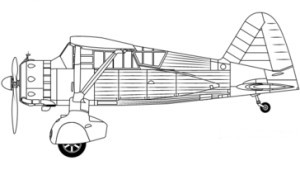
In 1934 the Air Ministry issued Specification A.39/34 for an army co-operation aircraft to replace the Hawker Hector. Initially Hawker Aircraft, Avro and Bristol were invited to submit designs, but after some debate within the Ministry, a submission from Westland was invited as well. The Westland design, internally designated P.8, was the work of Arthur Davenport under the direction of "Teddy" Petter. It was Petter's second aircraft design and he spent considerable time interviewing Royal Air Force pilots to find out what they wanted from such an aircraft. Less clear was whether he or the pilots understood the army cooperation role and what the army wanted, which was Tactical Reconnaissance and Artillery Reconnaissance capability - photographic reconnaissance and observation of artillery fire in daylight - up to about 15,000 yards (14 km) behind the enemy front. The result of Petter's pilot inquiries suggested that field of view, low-speed handling characteristics and STOL performance were the most important requirements. Survival in hostile airspace, a key requirement, seems to have been forgotten.
Davenport and Petter worked to design an aircraft around these features: the result was unconventional and looked, by the time of its maiden fight on 15 June 1936, rather dated. The Lysander was powered by a Bristol Mercury air-cooled radial engine and had high wings and a fixed conventional landing gear faired inside large, streamlined spats. The spats had mountings for small, removable stub wings that could be used to carry light bombs or supply canisters. The wings had an unusual reverse taper towards the root, which gave the impression of a bent gull wing, although the spars were perfectly straight. It had a girder type construction with a light wood frame around that to give the aerodynamic shape. The forward part was duralumin tube joined with brackets and plates, and the after part was welded stainless steel tubes. Plates and brackets were cut from channel extrusions rather than forming from sheet steel. The front spar and lift struts were extrusions. The wing itself was fabric covered. A somewhat similar wing layout was also successfully used in a later Polish LWS-3 Mewa army co-operation aircraft and much earlier RWD-6 sports plane.
Despite its appearance, the Lysander was aerodynamically advanced; it was equipped with fully automatic wing slots and slotted flaps and a variable incidence tail plane. These refinements gave the Lysander a stalling speed of only 65 mph (104 km/h, 56.5 knots). It also featured the largest Elektron alloy extrusion made at the time: a single piece inside the spats supporting the wheels. This was a feature of British built aircraft only – Canadian built machines had a conventionally built up assembly due to the difficulties involved in manufacturing such a large extrusion. The Air Ministry requested two prototypes of the P.8 and the competing Bristol Type 148, quickly selecting the Westland aircraft for production and issuing a contract in September 1936.
The first Lysanders entered service in June 1938, equipping squadrons for army co-operation and were initially used for message-dropping and artillery spotting. When war broke out in Europe, the earlier Mk Is had been largely replaced by Mk IIs, the older machines heading for the Middle East. Some of these aircraft, now designated type L.1, operated with the Chindits of the British Indian Army in the Burma Campaign of the Second World War.
Four regular squadrons equipped with Lysanders accompanied the British Expeditionary Force to France in October 1939, and were joined by a further squadron early in 1940. Following the German invasion of France and the low countries on 10 May 1940, the Lysanders were put into action as spotters and light bombers. In spite of occasional victories against German aircraft, they made very easy targets for the Luftwaffe even when escorted by Hurricanes. Withdrawn from France during the Dunkirk evacuation, they continued to fly supply-dropping missions to Allied forces from bases in England; on one mission to drop supplies to troops trapped at Calais, 14 of 16 Lysanders and Hawker Hectors that set out were lost. A total of 118 Lysanders were lost in or over France and Belgium in May and June 1940, of a total of 175 deployed. .With the fall of France, it was clear that the type was unsuitable for the coastal patrol and army co-operation role. Nevertheless, throughout the remainder of 1940, Lysanders flew dawn to dusk patrols off the coast and in the event of an invasion of Britain, they were tasked with attacking the landing beaches with light bombs and machine guns. They were replaced in the home-based army co-operation role from 1941 by camera-equipped fighters such as the Curtiss Tomahawk and North American Mustang carrying out reconnaissance operations, while light aircraft such as the Taylorcraft Auster were used to direct artillery. Some UK-based Lysanders went to work operating air-sea rescue, dropping dinghies to downed RAF aircrew in the English Channel. Fourteen squadrons and flights were formed for this role in 1940 and 1941.
In August 1941 a new squadron, No. 138 (Special Duties), was formed to undertake missions for the Special Operations Executive to maintain clandestine contact with the French Resistance. Among its aircraft were Lysander Mk IIIs, which flew over and landed in occupied France. While general supply drops could be left to the rest of No. 138's aircraft, the Lysander could insert and remove agents from the continent or retrieve Allied aircrew who had been shot down over occupied territory and had evaded capture. For this role the Mk IIIs were fitted with a fixed ladder over the port side to hasten access to the rear cockpit and a large drop tank under the belly. In order to slip in unobtrusively the Lysanders were painted matte black; operations almost always took place within a week of a full moon, as moonlight was essential for navigation. The aircraft undertook such duties until the liberation of France in 1944.
The Lysanders flew
from secret airfields at Newmarket and later Tempsford, but used regular
RAF stations to fuel-up for the actual crossing, particularly RAF
Tangmere. Flying without any navigation equipment other than a map and
compass, Lysanders would land on short strips of land, such as fields,
marked out by four or five torches. They were designed to carry one
passenger in the rear cockpit, but in case of urgent necessity three
could be carried in extreme discomfort. The pilots of No. 138 and, from
early 1942, No. 161 Squadron transported 101 agents to, and recovered
128 agents from Nazi-occupied Europe. Germany knew little about the
British aircraft and wished to study one. Soldiers captured an intact
Lysander in March 1942 after its pilot was unable to destroy it after a
crash, but a train hit the truck carrying the Lysander, destroying the
cargo.
The Kit
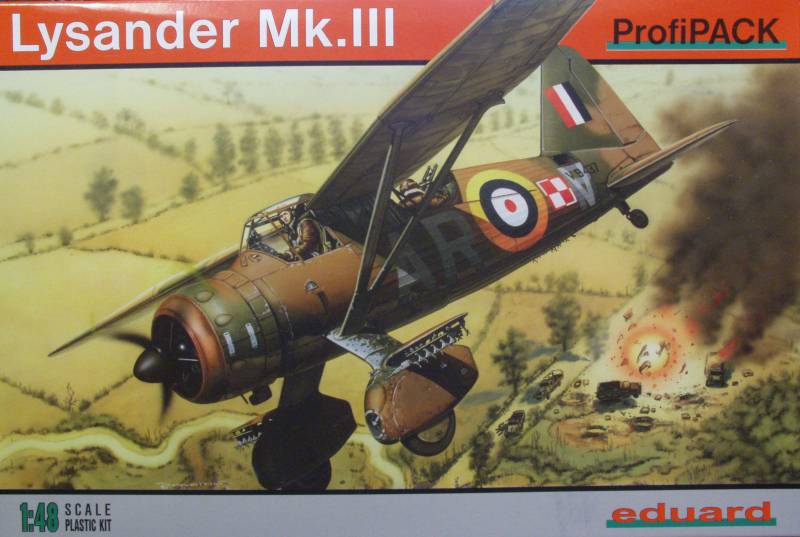
The Eduard kit comes in a tray type top open box with a thin top and a thin corrugated cardboard bottom half making for a sturdy box. Inside the box that are two resealable bags with the main sprues and a separate zip lock bag with the clear parts. since this is a Profipack edition also included in the box are some resin parts, a mask set and a color photo etch set, each in their own protective bag. All in all a very nice package of parts.
This kit was originally released around 2001 by a company called Gavia and the plastic in the kit is identical to that kit. The kit is molded in a tan colored plastic characteristic of Eduard. For its age the parts are crisply molded and flash free. The surface is glossy and features recessed panel lines and recessed fastener detail as well as some raised detail where applicable. The fabric detail is very well done, maybe only a little heavy on the fuselage sides. The control surfaces are all molded in the neutral position. Mold alignment is good so cleaning up parting lines will be easy. While this doesn't have the look and feel of a limited run kit it does not have alignment pins. Ejector pin marks have been kept out of visible areas. I did not find any surface defects on my kit.
Detail wise the kit is quite nice. With the PE, plastic and resin parts the interior is well appointed. The first 11 assembly steps are all interior related. It builds up into a sub assembly with the tubular frame work. The engine is built up with a crankcase and separate cylinders. You must supply the push rods. The propeller is one of the multi part types with separate blades and it's up to you to set the pitch. a large container is supplied to mount underneath the fuselage for one of the aircraft supplied in the decals but surprisingly there are no bombs or racks for the stub wings in spite of the fact the box art shows them. Apparently earlier Profipacks had them in PE but not this release. The wheels are in halves and not weighted. Lets look at the parts.
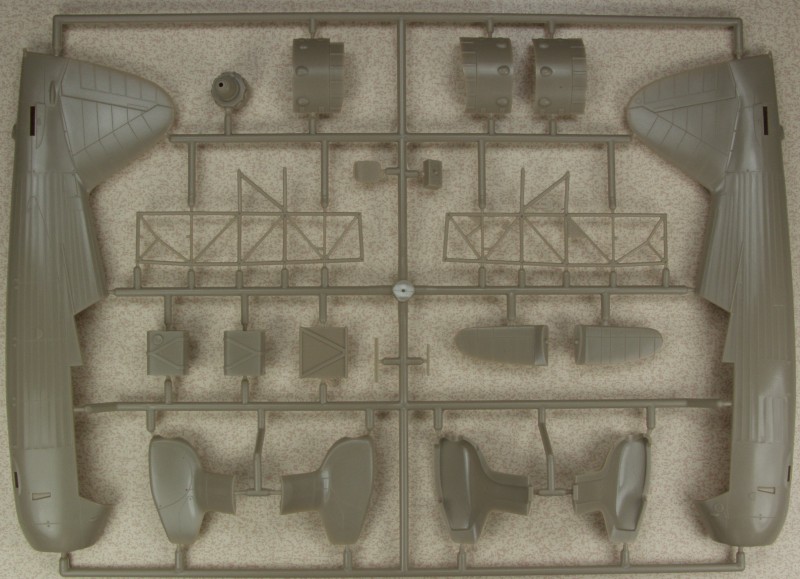
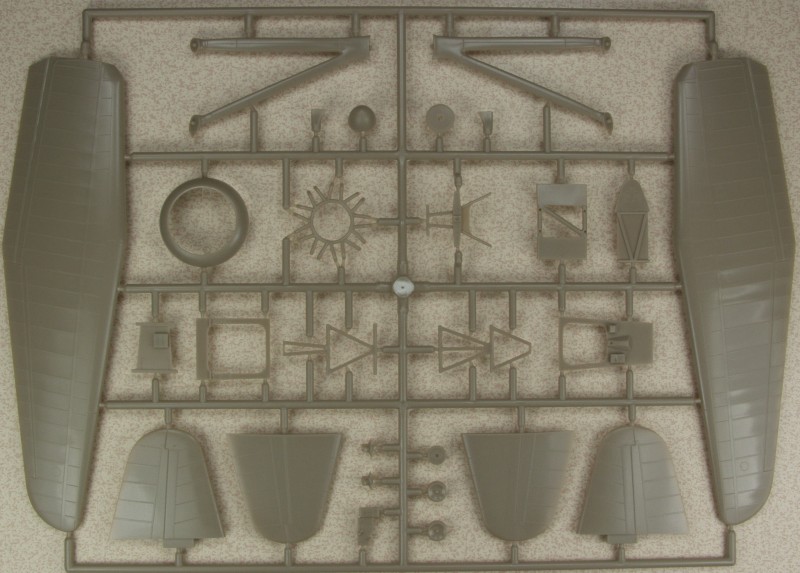
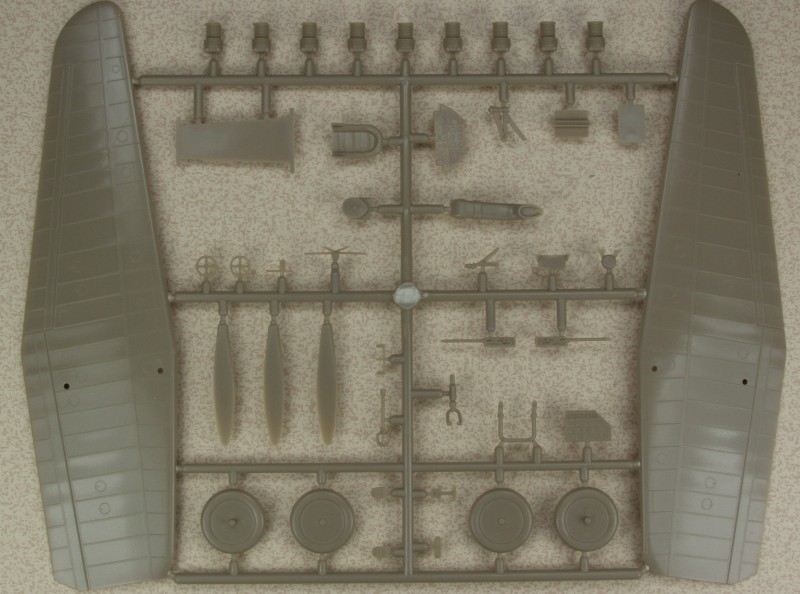
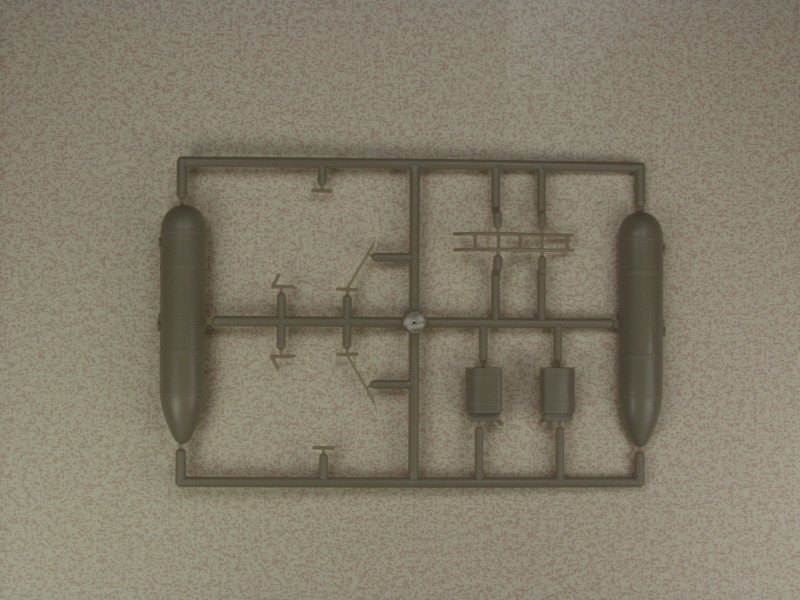
The resin parts include a gun for one of the marking options with ammo cans, two air intakes for the engine and a piece I couldn't identify as I could not find it called out any where. The parts are nicely cast with some light flash.

The photo etch is similar to a Zoom set with mostly cockpit related parts and a few other odds and ends.
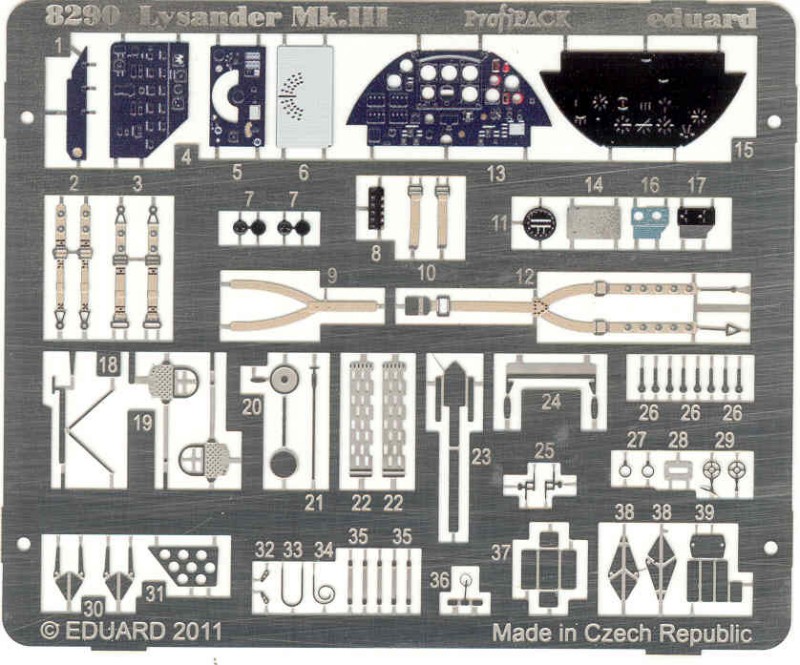
The clear parts are thin and clear with little
optical distortion.
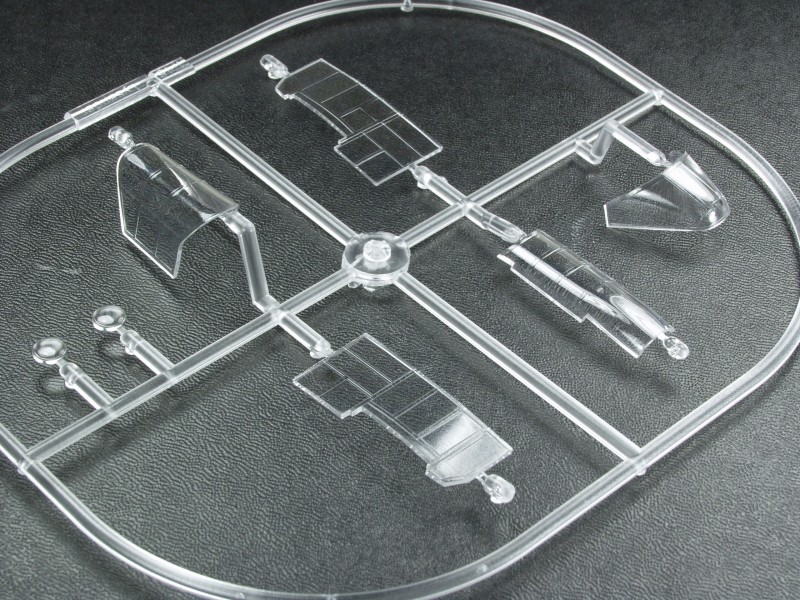
The decals look thin appear opaque and are glossy.The registration seems a bit off on a couple of the roundels and the ones marked 7 have a thin halo of yellow around them that is not as opaque as the rest of the decal. Some careful trimming should eliminate this. Markings are provided for five aircraft, one from 309 Squadron, one of the Polish squadrons, one from 613 Squadron, one from 26 Squadron, these three are in dark green and dark earth over sky colors, one from 161 Squadron in medium sea gray and green over black and one from 161 Squadron which is all black. I have had mostly good luck using Eduard decals.
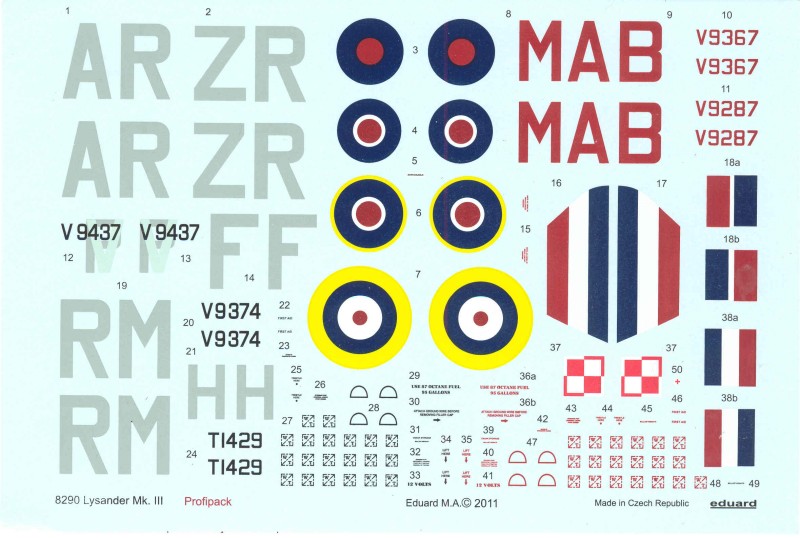
The instructions are in a 12 page booklet stapled at the spine. The paper is glossy and some color is used. Page 1 has some history in English and Czech, page 2 has the usual safety warnings, icon chart, parts map and paint chart with Gunze numbers. Pages 3-7 are the assembly steps broken down into 20 parts. Pages 8-12 are color profiles showing the paint and marking locations for the 5 aircraft.
After Market Goodies
With the Profipack there really isn't much need for anything else but there is quite a bit available if you go looking since the kit has been released numerous times in both Profipack and non Profipack editions. Google is your friend !
Conclusions
This is a nice kit and while the molds are not current they have held up well and still produce crisp parts with no flash. It's by far the best kit on the market in this scale. Some of the reviews consider the assembly to be a bit fiddly for beginners but I think most modelers should be able to handle it without too much trouble.
Links to kit build or reviews
A build of the Gavia kit on which this kit is based can be found here and an in box review can be found here, and here.
References
I currently have no printed references for the Lysander but if you search the Internet there are some available.
Back to the Misc 1/48 British page